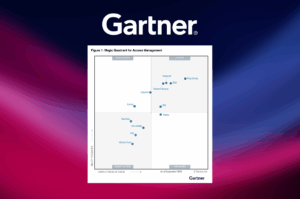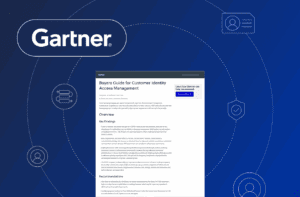Machine learning, a branch of artificial intelligence (AI), has swiftly permeated many digital security sectors, offering solutions that were once unthinkable. The very essence of machine learning lies in its ability to continually learn and adapt, breaking free from static, predefined patterns.
In a world that’s evolving rapidly, the significance of such dynamic solutions can’t be understated, especially in the domain of fraud prevention and risk management. Alarmingly, fraudsters are now weaponizing AI tools and technologies, launching their nefarious tactics at lightning speed and putting traditional anti-fraud mechanisms to shame.
In this blog post, we’ll explore the limitations of traditional rules-based risk engines, the benefits of machine learning based fraud detection, the crucial need for model transparency and how machine learning can empower — rather than replace — analysts in addressing the challenges of today’s fraud landscape.
The downfalls of rules-based risk engines
Inability to address newer threats
Traditionally, many institutions have relied on rules-based risk engines to combat fraud. These engines function based on predefined rules that dictate how to respond to different situations. However, modern fraudsters employ sophisticated, ever-evolving tactics, constantly innovating and finding loopholes in enterprise defenses. In this high-stakes game of cat and mouse, relying on static rules is akin to bringing a knife to a gunfight.
A static rules-based system, no matter how intricate, is fundamentally reactive by nature. Rather than reacting in real time to newer threats, it waits for threats to manifest before responding, potentially leaving systems vulnerable until the next update. In today’s aggressive and dynamic threat landscape, this retroactive approach is not only inadequate but perilous. Proactive anticipation, early identification and swift action against novel threats are critical, and this is precisely where static rules falter.
Maintenance and management challenges
As the digital landscape shifts, the number of rules required to keep static detection systems relevant can burgeon exponentially. Issues that arise from this complexity include:
- Expanding rule sets: We frequently hear examples from customers where groups of policies specific to each application or business unit require thousands of static rules.
- Outdated and redundant rules: Over time, a significant portion of static rules become outdated, ineffective or the legacy of administrators no longer overseeing the system, leading to a cluttered rulebook that many team members no longer understand.
- Extended modification time: Modifications to static rules not only take a prolonged period to implement but may also inadvertently conflict with pre-existing rules.
- Prolonged tuning cycles: The use of rules to supplement initial training periods for machine learning models can take months at a time, making the system dependent on static decisioning.
- Rule conflicts: Conflicts can arise from overlapping rules, further complicating the management process.
- Short-lived efficacy: The effectiveness of any rule modification tends to be fleeting, given the rapidly changing nature of threats.
High cost of ownership
The need for constant oversight, frequent updates and the integration of new rules contributes to spiraling costs, making rules-based systems increasingly uneconomical. Additionally, the creation, maintenance and administration of rules often necessitate additional professional services from the product vendor. This not only adds to the overall cost, but also results in a much slower response time, hampering the ability to adapt swiftly to emerging threats or changes.
Challenges in understanding and interpreting proprietary technology
Traditional risk engine rules are often proprietary, demanding a specific syntax and a deep understanding tailored to the product. This uniqueness often necessitates specialized training for individuals who administer these systems.
Ensuring that every person in charge is sufficiently educated and can use the system correctly becomes a Herculean task, often leading to misconfigurations, oversights and inefficiencies. The learning curve, combined with the specificities of the product, means that even slight changes or upgrades can demand significant retraining, further compounding the challenges.
Benefits of machine learning for fraud prevention
Machine learning represents a paradigm shift in the way we approach fraud detection. Unlike static rules, machine learning models can be trained on vast amounts of data, learning patterns and anomalies. This means they’re inherently designed to recognize and adapt to new fraudulent tactics, even if they’ve never encountered them before.
This dynamic learning and adaptability enables businesses to keep up with innovative fraud techniques and fraudsters capable of discerning and circumventing rules-based protections. In this dynamic approach to detection, enterprises can utilize new techniques and capabilities enabled by machine learning, as outlined in this section.
Sensitivity adjustment for detection
Machine learning based detection systems such as Transmit Security Detection and Response provide a notable benefit by allowing businesses to modify the detection sensitivity in their machine learning model according to their unique needs and viewpoints. Rather than sticking to fixed conditions, this capability emphasizes a business-centric approach.
Consequently, it enables detection that mirrors how a company wishes to address potentially suspicious activities in its customer-oriented applications. This adaptability enhances both user experience and security, permitting companies to change their strategies in response to evolving business requirements or emerging threats.
Enhanced Scalability
Machine learning models are innately designed to handle enormous volumes of data, ranging from millions to billions of datasets. Unlike traditional systems, which can become bogged down as the amount of data increases, these models thrive on it. The more data they’re fed, the better they perform.
These models have the unique capability to continually ingest new information, adapt in real time and develop proactive models that don’t just react to the current threat landscape but also anticipate and adjust for future threats. As digital ecosystems become more intricate and expansive, the ability of machine learning models to dynamically scale and gain intelligence on emerging threats becomes a crucial asset for businesses striving to maintain a robust security posture.
Reduced overhead
Automated learning not only diminishes the necessity for manual rule updates, but also fundamentally changes the overhead structure associated with traditional fraud prevention systems. In the conventional model, constant rule modifications are required, necessitating frequent reviews. Every minor change to an application, and the introduction of each new application and channel, often demands the creation of new rule sets, resulting in an almost endless cycle of rule formulation and revision.
With machine learning models, this paradigm is upended. The system naturally evolves with the data it’s exposed to. It intuitively recognizes patterns and adjusts its behavior without the need for manual interventions. This translates to significant savings in terms of time, resources, and financial costs.
Companies can then redirect these saved resources to other essential areas, ensuring more efficient operations and better utilization of human expertise. The dynamic nature of machine learning, where models self-improve, minimizes maintenance efforts, offering a more sustainable and cost-effective solution in the long run.
The importance of transparency in machine learning models
Although machine learning provides significant advantages over rules-based detection systems, a mere shift to machine learning isn’t a magic bullet. It’s essential that these AI systems remain transparent, providing insight into how user anomalies are detected, rather than relying on black-box detection mechanisms. Decision makers need to understand how conclusions are drawn, especially in critical areas like fraud detection. This ensures accountability, builds trust and facilitates compliance with regulatory requirements.
To maintain transparency into machine learning models as they continuously adapt to new threats, the integration of feedback loops is pivotal. These loops should be designed in a self-service manner, easily administered with dynamic tags or labels in a human-understandable format. Such an approach ensures that feedback can be provided swiftly and effectively, without necessitating deep expertise or extensive training.
The Evolution of Fraud Analysis: Empowering, Not Replacing Analysts
Although AI and machine learning can simplify and expedite fraud detection, the progression towards AI and machine learning in fraud detection does not spell the end for fraud analysts; rather, it fundamentally transforms their role in a more empowered direction. The shift is profound, moving from a largely reactive stance to a proactive, data-centric mindset.
Traditionally, the role of a fraud analyst was largely reactive: they would review instances of fraud and then create or tweak rules in an attempt to prevent similar future occurrences. This approach, while valiant, frequently resulted in an intricate web of rules — often referred to as “rules spaghetti” — that could be cumbersome and challenging to manage.
With the integration of machine learning models, the emphasis for fraud analysts shifts towards data labeling and feedback. Instead of creating rules in reaction to fraud, analysts now review instances of fraud, label the data appropriately and feed this information back into the machine learning model. This feedback loop ensures that the model continuously learns, adapts and becomes increasingly robust in its predictions and recommendations.
What’s striking about this evolution is that it offers numerous advantages:
- Efficiency: There’s no need for the continuous deployments that were previously required to update or introduce new rules. This process streamlines operations and reduces potential points of failure.
- Control: Contrary to some concerns, shifting to a machine learning approach doesn’t mean surrendering control. Analysts still play a pivotal role in refining and training the model, ensuring its accuracy and relevance.
- Avoiding complexity: The often tangled and overlapping set of rules known as rules spaghetti can be set aside. Instead, the machine learning model can handle vast amounts of data and complex relationships without such entanglements, ensuring smoother operations.
In other words, the introduction of AI and machine learning in fraud detection does not diminish the role of fraud analysts. Instead, it recalibrates their focus, elevating their contributions from rule makers to essential trainers of increasingly sophisticated, adaptable and efficient systems. It’s a transformation that’s not just about harnessing cutting-edge technology but maximizing human expertise in harmony with it.
The future of fraud detection
As the battleground against fraud gets more complex, it’s clear that traditional rules-based systems are no longer sufficient. The future lies in harnessing the power of machine learning — not just for its dynamic learning capabilities, but also for its scalability and adaptability. Pairing this technology with transparent and user-friendly feedback mechanisms ensures that the systems remain accountable, understandable and always at the cutting edge of fraud prevention.
To find out more about Transmit Security’s machine learning based Detection and Response Services, check out our service brief or contact Sales to set up a free demo.




